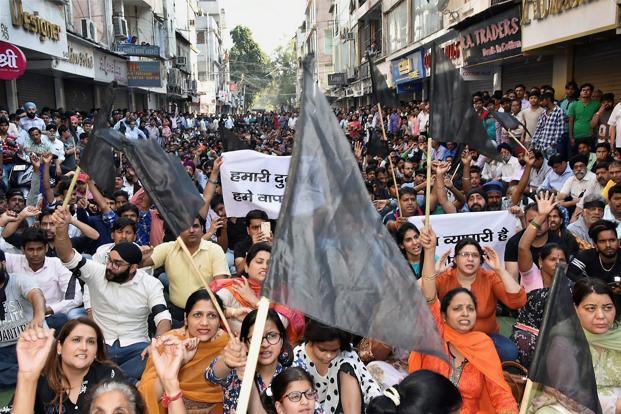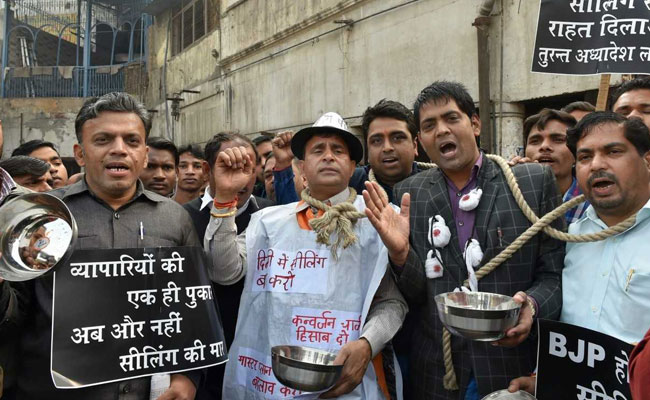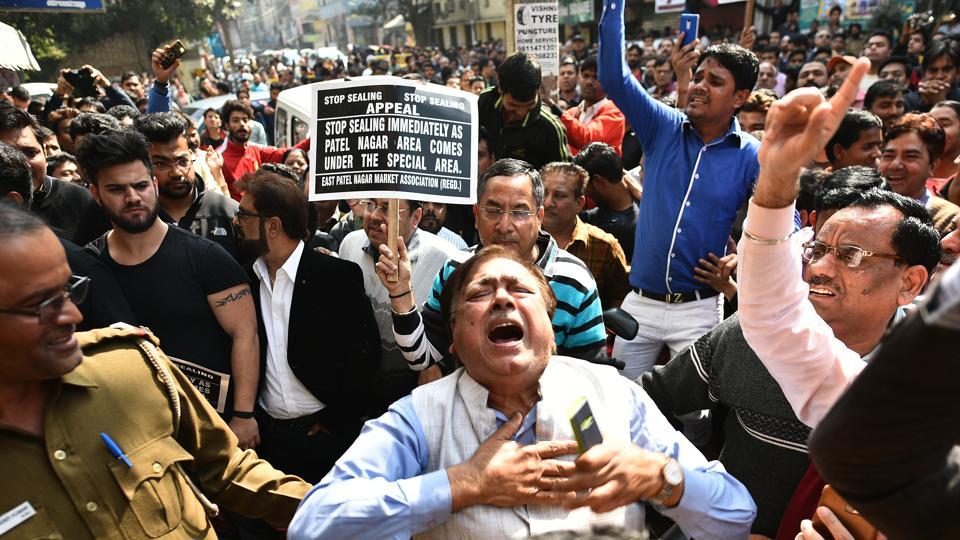
How a world class city was turned into an urban mess
- May 21, 2018
- 0
Among the many hazards of making a living in the vast capital territory of Delhi,
Among the many hazards of making a living in the vast capital territory of Delhi, none perhaps is more hazardous than doing business from a Delhi address. No one, including the municipal authorities can certify that the trade is being conducted from premises that are building bye-laws’ compliant. The city’s urban planning, such as it has been and such as it is, preceded on the principle of segregating residential and shopping areas and a demarcated industrial area, usually on the outskirts of the city limits. Most urban planners followed this norm, and as migration into the cities was limited, the short sightedness of the municipal governance or of the city development perspective was really subjected to critical evaluation. This was good for the 50s, 60s, and even late 70s. And then the trickle changed into a tide, with people coming to cities in big numbers. At the same time, every one needed an address in the capital of India, to ‘manage’ its business interests. Public sector or private, education or employment, land was getting used up at a very fast pace. The private developers moved in to seize the opportunities in real estate. The state could not ensure a steady supply of serviceable land and the mounting pressure pushed prices and aided and abetted by the emerging nexus of builders, politicians and bureaucrats twisted building norms and laws to the detriment of city life but suit their profits. The tentative effort for a planned Delhi, that started in 1957 and produced a Master Plan in 1962, thus was subjected to erosion after erosion. Meanwhile, the population of Delhi was growing fast. In 1961, it was a mere 2.6 million and in 2011, it burgeoned to
18.20 million and estimated to be 23 million by 2021. As per the MPD’s own estimates, in 1998, there were 1.29 lakh industrial units employing about 1.44 million people. At the same time, there were 2.3 lakh retail units, employing about half a million people. Add the wholesale enterprises plus the informal sector, and we have a huge segment in 2018 with a complex set of needs that require to be fulfilled. Delhi has one of the lowest unemployment rates and yet the number of unemployed is over 1.5 million persons even as CMIE data for Delhi shows unemployement rate at 2.5 % of the population. The magnitude of managing Delhi’s needs is huge. In one word it is a congested metropolis in every sense of the term.

The city has over 90% illegal or unauthorized constructions. Even the shopping centre’S have Violations. Basements have been converted into Shopping areas residential floors above the Shops have been converted into eating places. To top it all, they were even given licenses to function as such. Health clearances, sanitary clearances excise licenses and even from pollution authorities and with fees and taxes duly remitted annually. Demolition and sealing of premises means loss of jobs. Economic activity will be adversely affected and could easily run into crore. The added runaround is a cost by itself. From pillar to post, after
fulfilling compliance needs, the transaction costs Of de-sealing Will be another financial burden. But where are the solutions? AS usual the political messaging is confused and contradictory.
The state government says are thing, the Corporations await directions and the Centre tries its hand at tinkering with the Master Plan yet again. A whole range of strategies have been trolled out. From seeking a moratorium on sealing and demolitions from the court till to regularizing the illegal constructions and notifying more mixed used areas and granting a higher FAR from the current 180 to 400 are possible answers. These are really recipes for adding to the chaos. A doubling of the floor ratio with 100% coverage means the height restrictions get thrown out of the window, Yes, this increase comes with conditions for creating parking facilities, but by whom?
The corportaion’s record is not very encouraging in this regard. The world class city of Dehi has lost its way. Answers can come only through a cooperative decision making system and not a competing one.This is where the start has to be made. Decisions on urban matters have an economic and social consequence. Most livelihoods are managed despite the government’s role and not because of it but weak governance environment erodes economics sentiment. there is no doubt we need more commercial spaces and indeed there are spaces available but only through intelligent and imaginative land management. The state agencies have to stop behaving like property dealers but help asset building for better city life. The metro stations need commercial development, underground parking has to be the norm and many other managerial measures are needed for sustained not to mention the city’s enviromnet. It is still possible.

The city’s vehicle Populations over the one crore mark as of 2017. Add non motorized transport, also competing for road space, with no parking facilities of any description, there is only one word that fits the description of this city of Delhi. It is a veritable Urban Chaos. Our city planning has been squarely beaten by the volumes. To ease matters for the city, the decision makers have resorted to cut and paste strategies. As the sanctity of the earmarked residential and commercial areas got destroyed, the 2021 Master Plan was dated before it hit the starting point. Since the state could not meet the demands of the population, they resorted to meeting them on their own. Urban governance, challenged as never before, was induced to look the other way as builders took over the city development. . Byelaws and building protocols fell by the way side and violations and illegalities flourished. The judiciary was forced to intervene as the executive failed in its performance of enacting and implementing sensible laws for their stated ambition of ensuring a planned development for the city of Delhi. The judiciary has been scathing in its observations on the state of urban affairs in the city. “Invaders have pillaged Delhi for hundreds of years, but for the last couple of decades it is being ravaged by its own citizens and officials governing the capital city…”). Given more such serious remarks, the Court appointed a Monitoring Committee to oversee and ensure compliance of the Court’s orders with regard to industrial activity in residential or non- conforming areas. This was 2006.What followed in the later years, has been a contest of wits between different authorities and the suffering parties. The demolition and sealing drive began in 2006 and has worked in fits and starts. The courts have been unrelenting and the officialdom equally recalcitrant. The result is creating a law for mixed land use facilities, tweaking it constantly to accommodate conflicting interests, unwilling implementation coupled with little or no compliance. In the end, there is a dissatisfied and angry court, politicians across the spectrum eager to take credit but no durable solutions to offer and a whole range of livelihoods from traders to workers under threat of hunger and unemployment and an inept officialdom short of credible professional answers. Urban and city management cannot be done through only the Indian penal code. Government have to secure and negotiate solutions through technical and social mixtures, through simple implementable laws. Our law makers and rule makers believe that ambiguity in law gives flexibility and this in turn gives the enormous administrative advantage of retrofitting a law to any contingency. It is never a good idea to have a dynamic law to please all as per requirement of the individual.



























































